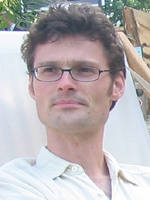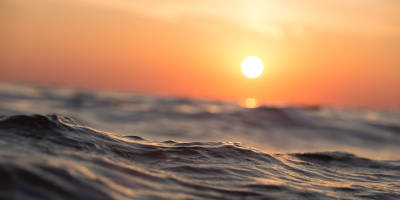| First name: | Frank |
| Last name: | Zielinski |
| Country: | Germany |

Geobiological coupling of hydrothermal vent fluids with endosymbiotic primary producers at spreading axes
| Education: | |
| since 2003
PhD student Molecular Ecology / Marine Symbioses Max Planck Institute for Marine Microbiology California Inst. of Technology, Pasadena, USA |
|
| 2003
Diploma in Biology Humboldt University, Berlin, Germany |
|
| 1999
Graduate courses in Microbiology, Biochemistry, and Zoology Humboldt University, Berlin, Germany |
|
| 1998
Graduate courses in Bacteriology and the liberal arts Bates College, Lewiston, Maine, USA |
|
| 1997
Graduate courses in Zoology and Botany Humboldt University, Berlin, Germany |
|
| 1995
Undergraduate studies in Biology Humboldt University, Berlin, Germany |
I am interested in symbiotic associations. Symbiosis between two or more organisms - be it mutualism, commensalism or parasitism - is perhaps the major driving force in the evolution of life. Ancient symbioses between prokaryotes have for example let to the origin of eukaryotes and endosymbiosis between early eukaryotes and bacteria have eventually resulted in eukaryotic cell organelles: mitochondria and plastids. Several protist lineages evolved by secondary endosymbiotic events and many metazoans rely or depend on endosymbionts. One intriguing example for such an association is the symbiosis between deep-sea hydrothermal vent mussels and bacterial primary producers which I study. In fact, the bacterial symbionts may be more analogous to a cell organelle than to a free-living microbe.
The bacteria reside in the mussel’s gill tissue as endosymbionts. The hydrothermal fluids provide the energy for the bacteria and the bacteria in turn provide the mussel with carbon compounds. The mussel then again supplies its symbionts with a constant fluid flow and, by hosting them offers an ideal ecological niche. Therefore, it is a true mutualistic relationship in that two partners benefit from each other. Craftily, the mussel hosts two types of bacteria: a methanotroph using methane and a chemoautotroph using sulfide as energy source thus being on the safe side in case one of the energy sources should run dry.
That’s it in short but many details remain elusive and lots of questions unanswered: What are the biogeochemical conditions over short and long time periods (seconds and years) at the sites around which the mussels settle? What is the in situ composition of diffuse hydothermal fluids that supply the mussels and its symbionts? Does the composition of the hydrothermal fluid determine whether one type of bacteria dominates over the other? Are there other electron sources provided with hydrothermal fluids that are used by the bacterial endosymbionts? Are there additional endosymbionts that have previously been overseen? Are there specific carbon compounds that the bacteria transfer to the host or does the mussel fully digest its symbionts? Does the mussel supply nutrients or growth factors in exchange? How does it regulate uncontrolled bacterial growth inside its cells? How do the bacteria bypass the mussels’ immune response when acquired from the environment? How is the metabolism of the free-living stage different from that of the symbiotic stage? And so on…
Questions, questions, questions! A few of them I am trying to answer myself others I will leave for marmic students yet to come.
Zielinski, F. U., C. Borowski, H. H. Gennerich, N. Dubilier, and F. Wenzhöfer. In situ measurements of hydrogen sulfide, oxygen, and temperature in diffuse fluids of the ultramafic-hosted Logatchev hydrothermal vent field (Mid-Atlantic Ridge): implications for symbiont-containing Bathymodiolus mussels. In preparation.
Zielinski, F. U., J. M. Struck, S. Wetzel, T. Pape, R. Seifert, F. Wenzhöfer, and N. Dubilier. The sulfur-oxidizing endosymbiont of the hydrothermal vent mussel Bathymodiolus puteoserpentis uses hydrogen as an energy source. In preparation.
Zielinski, F. U., A. Pernthaler, S. Duperron, L. Raggi, O. Giere, C. Borowski, and N. Dubilier. Widespread occurrence of an intranuclear bacterial parasite in bathymodiolin vent and seep mussels. Environmental Microbiology 11: 1150-1167.
Duperron, S., C. Bergin, F. Zielinski, A. Blazejak, A. Pernthaler, Z. P. McKiness, E. DeChaine, C. M. Cavanaugh, and N. Dubilier. 2006. A dual symbiosis shared by two mussel species, Bathymodiolus azoricus and Bathymodiolus puteoserpentis (Bivalvia: Mytilidae), from hydrothermal vents along the northern Mid-Atlantic Ridge. Environmental Microbiology 8: 1441-1447.
Devey, C.W., Lackschewitz, K. S., Baker, E., and B. Bannert, O. Bislich, G. Engemann, L. Fowler, P. Günnewig, D. Hüttig, Y.-G. Kim, A. Klügel, A. Knee, A. Koschinsky, A. Ksienzyk, B. Kührig, T. Kuhn, D. Matthew, C. Mertens, T. Mosch, B. Murton, N. Nowald, H. Paulick, V. Ratmeyer, M. Reuter, I. Rousse, O. Schmale, W. Schmidt, F. Schubotz, M. Schröder, C. Seiter, K. Stange, J. Stecher, U. Stöber, S. Storm, J. Sültenfuss, T. Teichgräber, P. O. Thierer, S. Tille, S. Tyler, W. Walter, P. Wefers, and F. Zielinski. 2005. Hydrothermal and volcanic activity found on the Southern Mid-Atlantic Ridge. EOS 86: 209-216.
Haase, K. M., S. Petersen, A. Koschinsky, R. Seifert, C. W. Devey, R. Keir, K. S. Lackschewitz, B. Melchert, M. Perner, O. Schmale, J. Süling, N. Dubilier, F. Zielinski, S. Fretzdorff, D. Garbe-Schönberg, U. Westernströer, C. R. German, T. M. Shank, D. Yoerger, O. Giere, J. Kuever, H. Marbler, J. Mawick, C. Mertens, U. Stöber, M. Walter, C. Ostertag-Henning, H. Paulick, M. Peters, H. Strauss, S. Sander, J. Stecher, M. Warmuth, and S. Weber. Young volcanism and related hydrothermal activity at 5°S on the slow-spreading southern Mid-Atlantic Ridge. Geochemistry Geophysics Geosystems 8: Q11002.
Eckert, K., Zielinski, F., Lo Leggio, L., and Schneider, E. 2002. Gene cloning, sequencing, and characterization of a family 9 endoglucanase (CelA) with an unusual pattern of activity from the thermoacidophile Alicyclobacillus acidocaldarius ATCC27009. Appl. Microbiol. Biotechnol. 60: 428-436.


